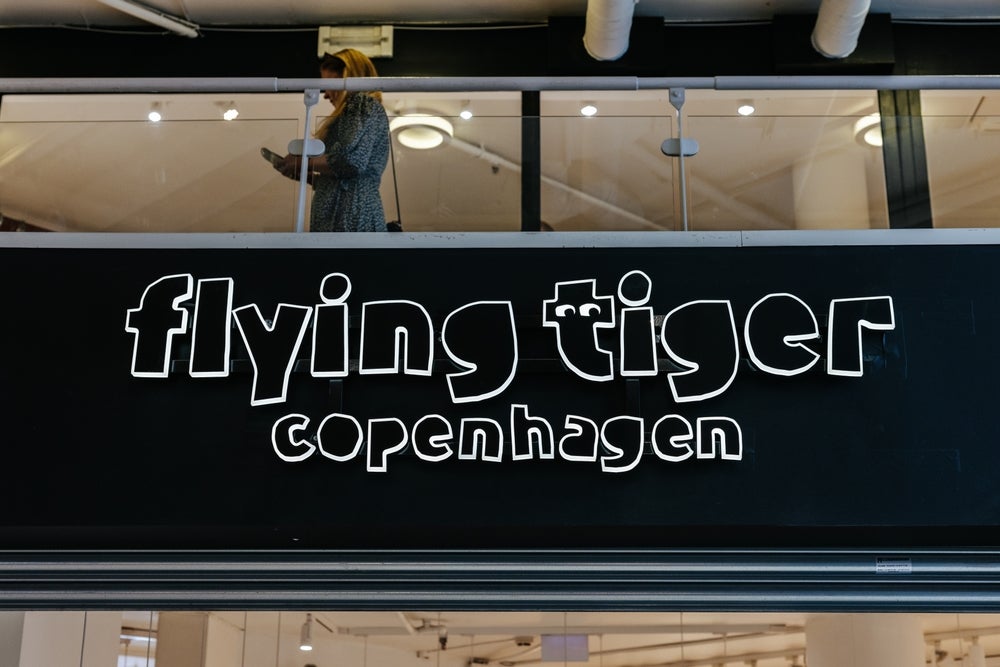
Once a quirky oddity on the global retail scene, Flying Tiger Copenhagen has now become a familiar face to consumers in key shopping areas around the world.
Originating in 1995, Flying Tiger first debuted in the UK a decade later and in the US in 2015 (though it has since closed its US stores to focus on other markets).
The retailer offers consumers what former CEO Mette Maix has called “a treasure hunt”, as hundreds of new affordable items are added each month to the shop selections and many are limited edition. These items include toys, accessories, and homeware.
GlobalData includes Flying Tiger Copenhagen as a key player in the UK value, discount and variety retail sector, which was valued at £46.9bn in 2022 and is forecast to grow at a compound annual growth rate (CAGR) of more than 4% by 2027.
The challenge that lies ahead for the retailer is transferring its success with brick-and-mortar onto online platforms. In September, it announced ‘Live Shopping’ events in the UK market as part of its growth strategy in the country.
Retail Insight Network talked to Flying Tiger Copenhagen global influencer manager Simone Brændgaard Tolstrup and marketing performance team lead Sara Gammelgaard to uncover the retailer’s plans for live shopping alongside its in-store operations.
How is Flying Tiger adapting its strategies to meet the evolving demands of consumers?
Gammelgaard: At Flying Tiger Copenhagen, we have exponentially accelerated our digital experience over the last three years. One aspect is everything we are doing continuously to make the shopping experience better on our website. The other aspect is learning more about our customers, so we keep track of demand and react from there.
We have structured our team so we have a lot of specialists who can then focus on their specific areas and make sure that we are evolving and meeting the demands of the consumers.
Could you discuss any unique in-store experiences or elements that define the Flying Tiger retail experience?
Gammelgaard: I think most people would recognise us for our minimalistic store design kept in white, black and wood, which really makes the colourful products pop! Like other great retail stores, we have a maze layout that invites customers to see the whole store.
I would also say that our “quirky” products are our most unique experience. Customers know that they might find things they didn’t know existed, so they keep their eyes open when we restock with new items.
What have been the challenges and benefits of integrating live shopping into Flying Tiger’s strategy?
Tolstrup: One of the biggest benefits is the time spent with our customers. Through live shopping, we’re able to connect with our customers in a unique way; answering questions in real-time, showcasing and explaining new products, while showing our fun and entertaining brand personality. Moreover, with live shopping, we see instant results and interaction from our customers.
On the other hand, as we see it, one of the challenges of live shopping is that consumers expect something more from live shopping: a discount, something that they can’t get in stores or by shopping online. Entertainment gets us a long way, but it’s not the be-all and end-all, so we are working on how we can get viewers without teasing for discounts.
Another challenge for us is to balance global vs local. On 14 November, we’re testing out a global setup, where we’ll be live streaming to ten different markets at the same time.
How does Flying Tiger see the future of retail and live shopping, and what role does it anticipate playing in that future?
Tolstrup: In the future, we expect to see more trust in live shopping from consumers, who can build connections with brands and get real-time guidance while having the convenience of shopping from their couches.
However, we need to work on the challenge of the expectation for discounts and “special treatment”. Brands will need to find the balance between online and offline; offline needs to learn and adapt from online, where it’s much easier to track performance.



